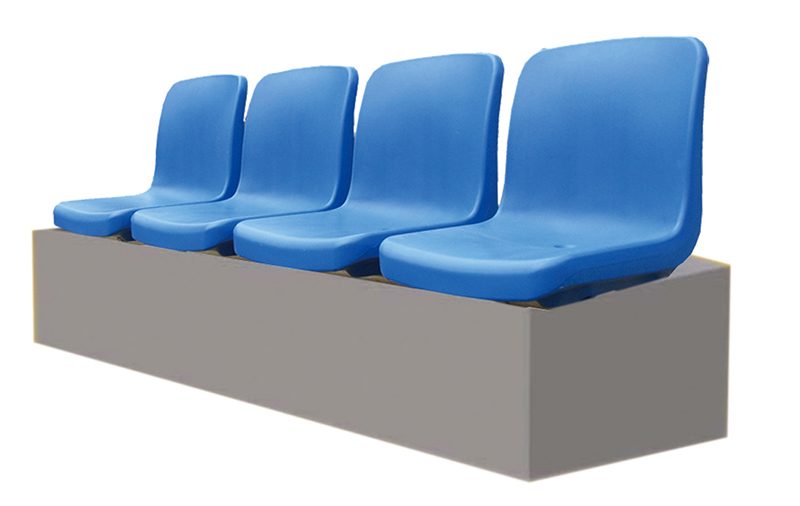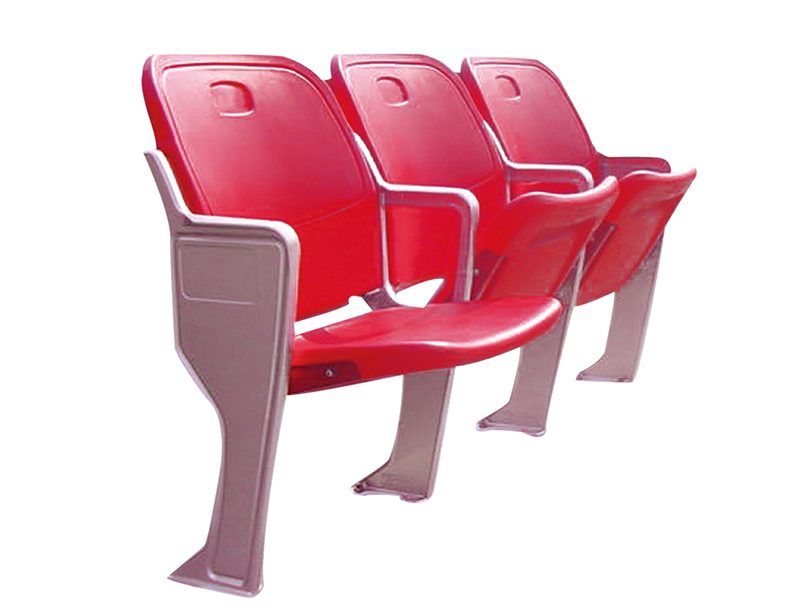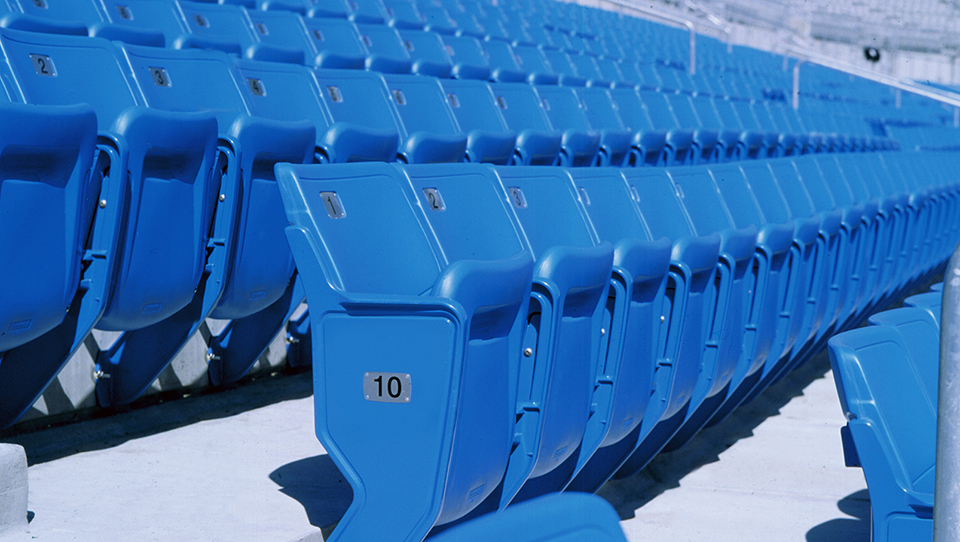The form of the stands of the stadium should provide high visual quality seats for spectators, VIPs and reporters as much as possible. Regarding the standard of seats in the stands, the number of consecutive seats, the requirements for the podium, the disabled auditorium, commentators and press seats, the design of the entrances and exits and sight lines of the stands shall comply with the relevant regulations on the stands. According to different architectural forms and different audience sizes, the audience stands have different plane types. The seating form of the auditorium is divided into two categories: backrest seats and backrest and backless benches (including sitting directly on the stands).
Ordinary seat
There are three options of high back, middle back and low back. Meet the needs of various occasions. In the outdoors, a one-piece seat made of hollow blow molding is generally selected. Wooden bench seats can be selected indoors. But it needs good paint protection, otherwise it will easily expand and contract and crack.

VIP seats-spacious and comfortable
What makes the VIP auditorium or business auditorium have a higher depth is the imaginative design. As just said, usually the business seats and the audience seats in the VIP area are separated by 50 cm on each floor. The space between each seat is about 55 to 60 cm (sometimes larger). When the depth of the seat reaches about 100 cm, it will provide ideal comfort for the person sitting on it. Moreover, the seats on the stands of the VIP boxes in stadiums usually have armrests. Under normal circumstances, each seat in the box area has at least two armrests or two adjacent seats share one armrest. Practice has proved that stadiums often make some modifications to the auditorium based on operational needs. If you want to transform the audience area with ordinary plastic seats into a business area, you can install armrests or cushions on the seats. The operators of the venues usually choose to maximize the comfort of the seats in the business district and give up a certain audience capacity.

Viewpoint selection of audience stands
- The viewpoint of the first type of venue is 22×36 meters in the first type of venue, that is, the basketball court is used as the design sight range. All other sports events are held in the basketball court. Although the gymnastics competition venue is slightly larger than the basketball court, except for floor exercises, which are performed on the ground in the center of the venue, other events are performed on equipment above the ground. So its sight is unobstructed.
- The point of view of the second type of venue is 24×44 meters. The second type of venue is mainly handball. The characteristic of handball is that there are fewer ground movements, mostly upper body movements, and the highlights are mostly near the goal line. The field of handball competition is 20×40 meters.
- The point of view of the third type of venue is the characteristics of ice hockey games: the venue is large and the speed is fast. There is an ice hockey boundary wall around the field, and the height of the boundary wall is 1.22 meters. Therefore, it is required that the eye-blocking height is ≯22 meters, and about 90% of the playing field can be viewed. Regardless of whether the boundary wall is a transparent material or an opaque material, the viewpoint can be selected on the ice surface within the boundary wall. In addition, the blocking height at the boundary wall should not exceed 1.22 meters.

Design of the rostrum and referee’s seat
There are two types of chairs for the rostrum: one is the non-fixed chair with a tea table; the other is the chair without a tea table.
- The rostrum is located at the best visual quality position in the entire auditorium. The rostrum and the VIP lounges of the “infield” and the competition venue should have direct and convenient passages. The number of seats on the rostrum is mainly determined according to local needs. Generally, it is 0.5 to 1% of the audience, and no more than 0.5% at the district and county level. The plane form of the rostrum has two types: with auxiliary table and without auxiliary table. The rostrum with sub-station is composed of two parts: the main station and the sub-station. When there are major events, the auxiliary stage is an extension of the main stage, giving the VIP seats a certain amount of leeway. Generally, this arrangement can be used in large gymnasiums. Most of the small and medium-sized pavilions adopt the layout without auxiliary platform.
- The referee’s seat is located on the opposite side of the podium. There is a referee workbench and necessary seats. It is generally arranged slightly above the ground to facilitate contact with the site. Its length should also be less than the podium. The referee console is the main hub for displaying time and scoring when performing various competitions. Therefore, its composition is more complicated, and it cooperates closely with each part. Because of the different equipment and requirements of each hall, the layout of the referee’s stand is also different. Change accordingly.
JUYI Seating has decades of experience in venue planning and seat selection. Starting from the whole, design different logos to display the information of the stadium. Starting from the part, show more details of the chair. There are projects in various countries. There are also many styles to choose from.